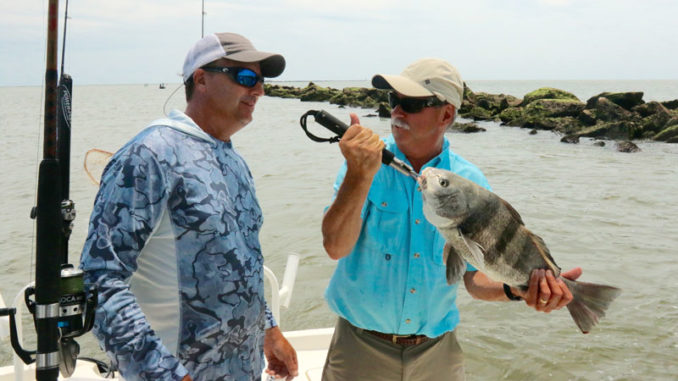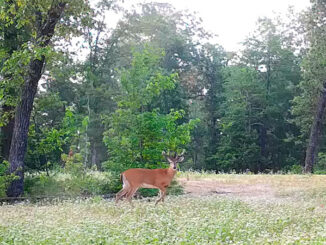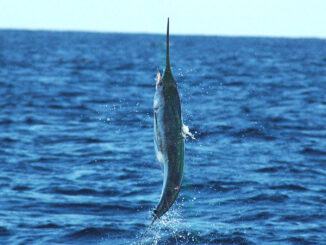
Black drum, Pogonias cromis, are a favored catch of many recreational anglers along the Carolina coasts. They can be found inshore, nearshore, and are also abundant on offshore structure, especially throughout the winter.
Black drum are fun to catch, and most anglers agree they are tasty at the table. They have a longish body with comb-like scales. Their body color ranges from light silver to dark gray, and they have four to five vertical black bars that disappear as the fish ages. They have small mouths and chin barbels that help them locate food.
Anglers find black drum in a wide variety of habitat. Sandy bottoms, shell-lined bottoms and live bottoms are all good choices when looking for black drum. These fish have a preference for being in areas with lots of natural or artificial cover. They tolerate a wide range of salinity levels and are often found in brackish water. During periods of drought, they sometimes travel upriver of the saltwater dividing line. When spawning, however, they do prefer very high levels of salinity.
Black drum are opportunistic feeders and eat small invertebrates, crabs, oysters, worms, mussels, shrimp and small fish. Anglers usually catch them on shrimp.
Often accidental
Black drum are usually an accidental catch of anglers targeting redfish, flounder, speckled trout or sheepshead. However, keen anglers catching any of those species will often put their bait or lures very tight to downed trees or any other structure to up their chances of catching a black drum.
These fish don’t reproduce until at least 4-years-old, when they are typically about 23 inches long. They usually spawn in spring and early summer. Interestingly, black drum sometimes school up in large numbers to head to spawning areas, but other times, they trickle in solo or in very small groups.
Black drum are abundant throughout the southeast, and biologists report no concern over their numbers. They can grow quite large and have been known to live past 60 years of age in the wild.
Anglers sometimes confuse black drum with sheepshead, especially in younger fish when their vertical bars are most prominent. Young black drum are also sometimes misidentified as croaker. Nicknames for black drum include blackie, short drum, dark drum, and black croaker.





Be the first to comment